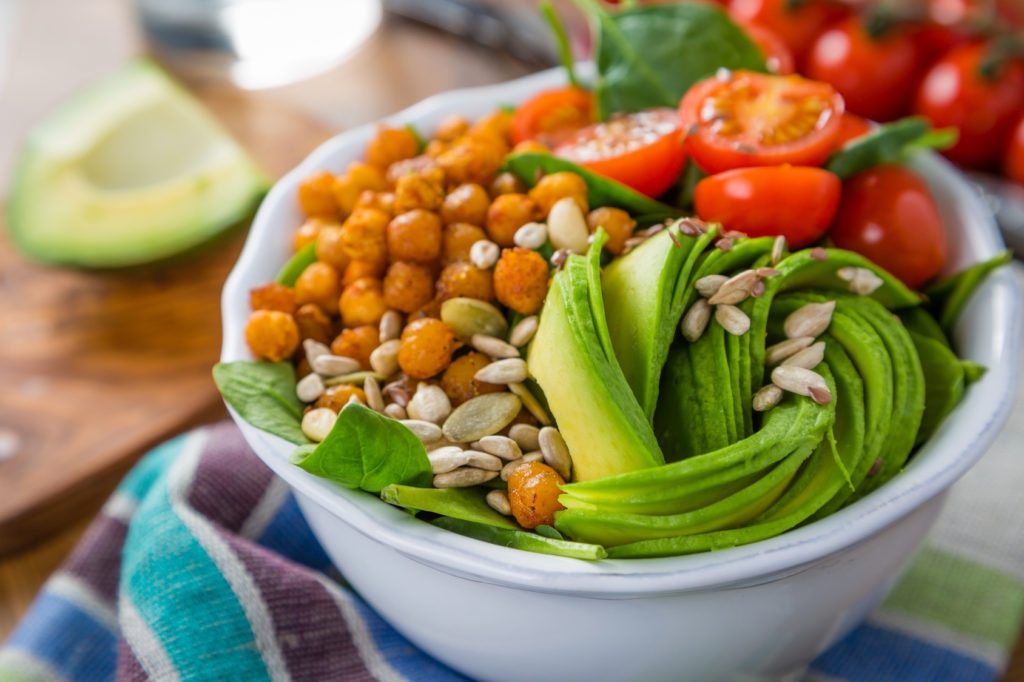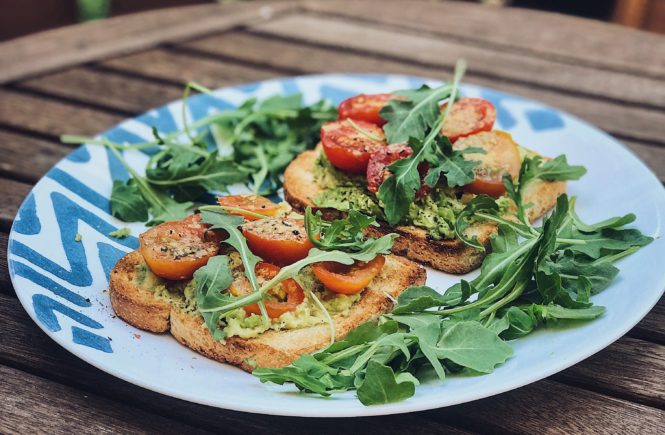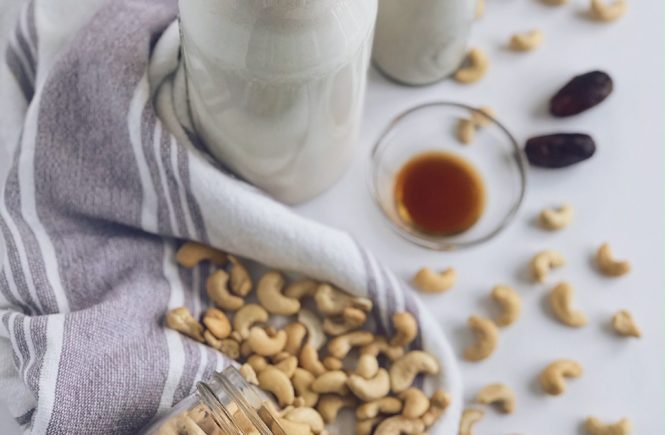Chances are, at some point in your life you’ve eaten a sandwich. Let’s look at the classic take on a sandwich, for example: sliced turkey, lettuce, cheese, tomato, with mayo on sourdough bread. Ya know, the works.
Well, if you were to take proper food combinations into consideration, a sandwich like that would be considered totally off-limits!
Even dishes that have typically been deemed “healthy” are often improperly combined! Think rolled oats topped with berries, yogurt and seeds. To most: a healthy and delicious breakfast. To a seasoned food combiner: a digestive disaster!
It might sound a little ridiculous to some, but I promise there is a method to this madness.
Why Does Food Combining Matter?
The idea behind practicing proper food combining is that we are freeing up digestive energy. Wait, back up, digesting food uses energy? Yes, it does. And a ton of it, for that matter!
Certain foods are tougher for our bodies to break down than others. For example, animal protein is one of the most difficult foods to break down, because of the complex chain of amino acids. Protein in general is the hardest food group to digest.
So what happens when we eat a protein like turkey with a starch like bread? Well… nothing good. Yes, we are obviously capable of digesting this combination, but it is not optimal.
Processing this mixture of concentrated foods asks an awful lot of our poor digestive system. Heavy food combinations like this take a toll on our energy and vitality over time. After all, our digestive system is working hard to break down that sandwich!
Food combining is almost like a “digestion hack.” Rather than placing this huge digestive burden on the body, we are saving it a lot of unnecessary work, therefore preserving energy. Optimal digestion is also one of the reasons I choose a plant-based diet, since plant foods are much easier to break down than animal products.
Instead of creating a slow-moving buildup of poorly combined, rotting food in the intestines, everything will sail along much more smoothly. As a result you will have more energy, feel lighter, get glowing skin, absorb nutrients better, etc. Sound good? Then read on!
Food Combining Basics
To begin, I’ll list some basic guidelines of proper food combining so you can get a feel for it. I promise it is not as complicated as it seems. In fact, when incorporated into your everyday life, it eventually becomes second nature!
Fruit Should Be Eaten Alone
Fruit has the highest water content of all food groups and is the purest food on the planet. It is truly healing, nourishing, and amazing (which is why I think diets that restrict or eliminate fruit are silly).
It is the fastest digesting food (about 20 minutes to break down). The key is to eat fruit only on an empty stomach. For this reason, I prefer to get my fruit fix in the morning, when my stomach is truly empty.
Let’s say you eat an apple for breakfast. After the apple has digested in 20-30 minutes, you can eat something else if you’re still hungry, like oatmeal. However, if you were to eat that bowl of oatmeal, and then eat your apple afterwards, the apple would sit on top of the oatmeal and ferment in your stomach, creating acidity and digestive trouble.
It is generally ok to combine different fruits, as well as combine fruit with raw greens, but nothing else. Think about eating light to heavy. Melons are the only exception and should be eaten alone entirely.
Note: Bananas and acas are a little different because they contain less water than other fruits. I use banana or sometimes an acai puree packet in my protein smoothie and have not had a problem with it.
Proteins and Starches Do Not Combine Well
Starches and proteins are two complex food groups. They require different enzymes and different environments in order to break down properly. Protein requires an acidic environment, and starch, an alkaline environment.
When eaten together these two will neutralize each other over and over again, while the body tries it’s hardest to break them down. Alas, this meal will never be fully digested. It will sit and bake in the hot environment that is our digestive tract, and much of the nutrition in the meal will be lost.
Remember that turkey sandwich we were talking about earlier? Yeah, that’s out. I’m not saying sandwiches are forever banished from your life (it’s ok, take a deep breath).
BUT if you’re going to eat a sandwich (or other badly combined meal), either the starch or the protein has to be swapped out for something else to make it a properly combined meal. Like roasted veggies instead of turkey, or a collard green wrap instead of bread (yes, it’s delicious). 🙂
Going beyond sandwiches, many traditional meals are improperly food combined! Think spaghetti and meatballs, chicken and rice, sushi rolls, eggs and toast. I know this might sound pretty horrific when you’re used to these combinations, but honestly, they can all be modified to fit the food pairing guidelines. You just might have to get a little creative.
Ingredient Swap Suggestions:
For example, I love tuna fish sandwiches and tuna melts. Now instead of that, I make a “chickpea tuna” sandwich using a base of chickpeas and vegan mayo!
Spaghetti and meatballs is another popular dish that can be modified. One of my favorite swaps is spaghetti squash (or brown rice/lentil pasta, since I’m gluten free) in place of wheat pasta, and homemade vegan meatballs in place of beef! Top it with marinara sauce and vegan cheese and you’ve got yourself a delicious, properly combined, vegan meal!
Or keep the beef or turkey meatballs if you’re not vegan, and just swap the pasta out for spaghetti squash, since veggies are neutral and can be paired with protein. The possibilities are endless if you just experiment a little!
Don’t Mix Two Different Types of Animal Protein
Mixing two different types of starch is okay, like quinoa and rice. On the other hand, mixing two different types of animal protein is NOT. Animal protein is already the toughest food to break down, so adding in different types just makes it harder for the body.
That said, combining different plant proteins, like nuts, seeds, and sea algae, is entirely fine since they’re not so complex. It is also okay to combine two different types of fish. Simplicity is key.
Beans and Legumes Are Both a Protein and Starch
Beans and legumes like chickpeas and lentils can be classified under both food groups and therefore can be combined as either a protein or a starch. This is why they’re so difficult to digest and can make us feel bloated and gassy.
I try not to eat beans or lentils on a daily basis but they are definitely a great source of plant protein and very satiating. It is best to soak dry beans or legumes overnight (to rid them of enzyme inhibitors, so they can digest better) then rinse and cook the following day.
Non-Starchy Vegetables Are Neutral
Vegetables pair well with everything. You can’t go wrong adding steamed veggies and a green salad to a protein-based meal or a starchy meal. They add tons of flavor, nutrients, and fiber.
Fats Pair Well With Starches, But Less So With Protein
Fats like oil and avocado pair fine with carbs, but it’s best not to eat a large amount of fat with protein, whether that be plant or animal protein. If you want to have a little fat with your protein occasionally, be sure to include plenty of green vegetables.
Keep It Simple
Because of their high water content, fruits and non-starchy vegetables are considered non-concentrated foods, while all other food groups are considered concentrated. The body can only digest one type of concentrated food at a time. For this reason, it’s best to keep meals as simple as possible.

Let's Recap
Here is a “cheat sheet” of everything you would need to remember to start properly food combining:
- Fruits should be eaten on an empty stomach
- Fruit is okay with raw greens (except melons)
- Proteins and starches do not mix
- Different animal proteins do not mix
- Different starches do mix
- Pair fat moderately with any protein
- Fats are okay with starches
- Non-starchy vegetables are totally neutral
A Word On Water
It is important to stay hydrated throughout the day, especially in the warmer months or if you’re working out a lot. Eating lots of non-starchy raw vegetables will help you stay hydrated, too.
In Ayurveda (world’s oldest medical system) it is said that water should not be had with meals, only before and after meals. This is because it is believed to “weaken the digestive fire.”
In layman’s terms, too much water can dilute our digestive juices and interfere with digestion. Only drink large amounts of water half an hour before your meals or an hour after your meals. This allows your body to do its thing without any other disruptions.
Of course, if you’re dying of thirst or ate something really spicy, have some water! Just try not to make it a habit to drink tumblers of liquid along with your meals.
Conclusion
Dieticians and medical professionals hotly debate food combining. I choose to follow it because the science behind it makes sense to me and I have had good results so far. I encourage you to give it a try and see how you feel.
The point is, you should feel your best, and if you don’t, something needs to change. Perhaps you’re a generally health-conscious person but you have digestive issues and feel sluggish all the time. Food combining could be your answer.
On the other hand, if you’re someone who doesn’t have the healthiest habits and needs to make several lifestyle adjustments, then food combining might not be the solution to all your problems. It is important to view your health as a whole lifestyle, rather than just searching for a quick fix.

Would you ever try food combining? Follow it now or have tried it before? Share your results and/or opinions in the comments!



